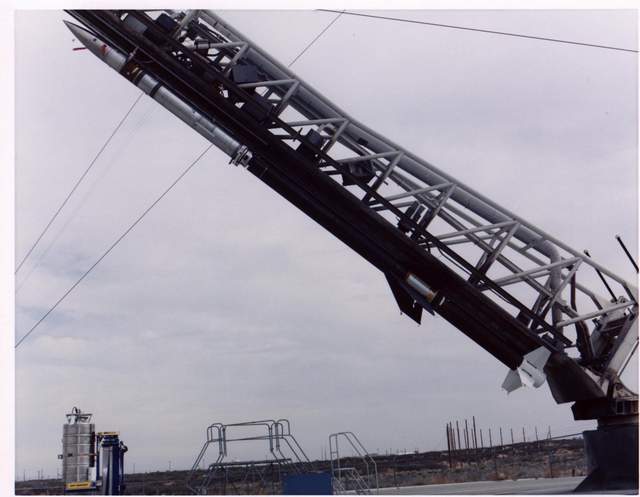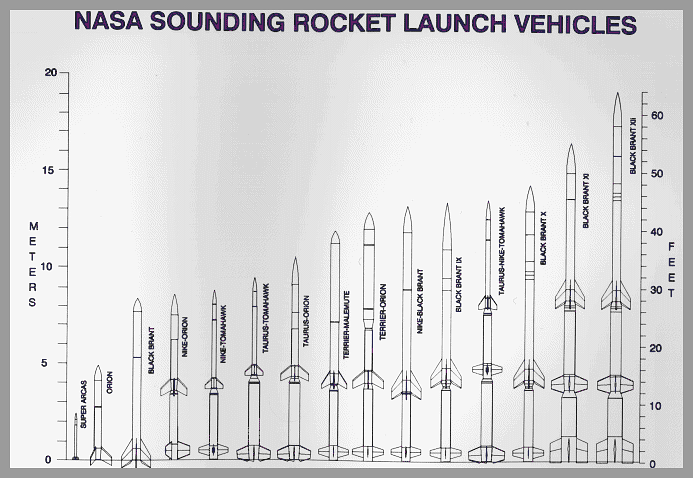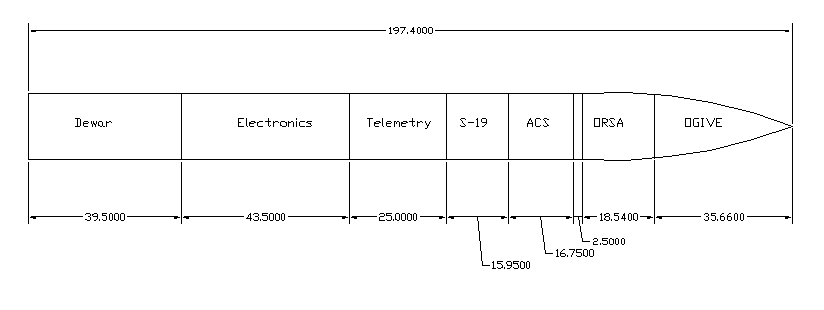

The XQC launch vehicles for flights 1-3 were Nike-Black Brant V solid fuel rockets assembled by NASA's Wallops Flight Facility.

The first stage of the XQC rocket is a solid fuel Nike booster. The Nike is a surplus army anti-ballistic-missile manufactured in the 1950's and early 1960's. The Nike booster used for XQC's flight #2 was manufactured in January 1960 and the booster for flight #3 in 1961. The Nike burns for less than 4 seconds attaining an altitude of 1700 meters and a velocity of mach 1. After coasting briefly, the second stage motor ignites. The second stage is a Black Brant solid fuel rocket manufactured in Canada. The second stage burns for 30 seconds, burning out at an altitude of 49,000 meters and reaching a maximum velocity of mach 6. The apogee is above 220 km, giving an observation time of 240 seconds above 160 km.
Guidance during powered flight is provided by a Saab S-19. The S-19 uses four rotating canaards at the forward end of the rocket and internal gyros to keep the rocket attitude within acceptable limits. During the observational phase of the flight, the payload attitude is controlled by a Strap-3 Attitude Control System (ACS). The ACS uses internal gyros and compressed gas jets to manuever the experiment to its target position. In flights 1-3 the ACS manuevered the payload to an attitude corresponding to 90+60 in galactic coordinates, near the northern galactic pole..
The total XQC rocket is 14.6 meters long including a 5.5 meter recoverable payload. An overview of the recoverable payload is shown below (dimensions are in inches):

This page written and maintained by F. Scott Porter (email:
Frederick.S.Porter@gsfc.nasa.gov)
Responsible NASA official: F. Scott Porter (email:
Frederick.S.Porter@gsfc.nasa.gov)
NASA Homepage.